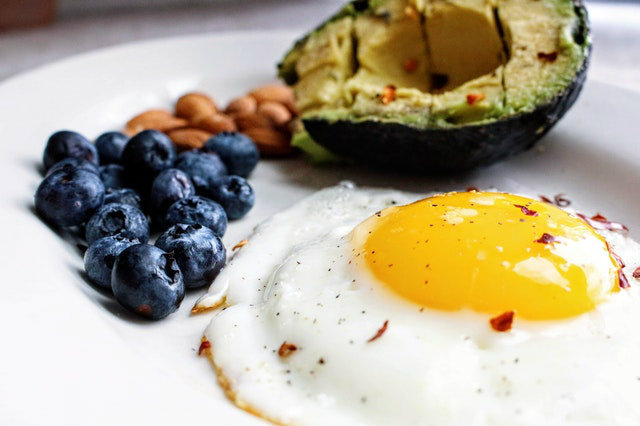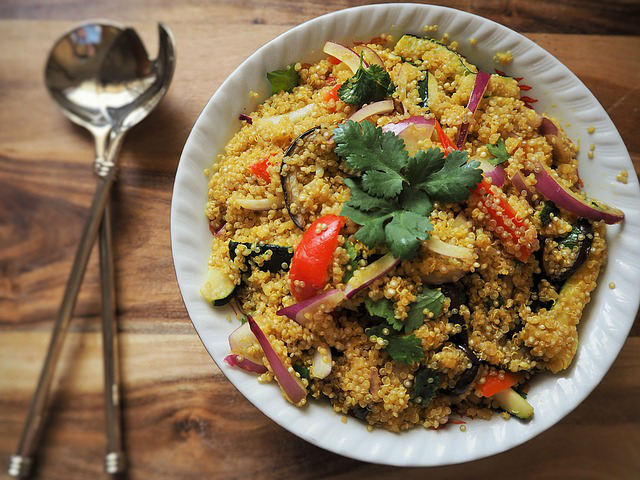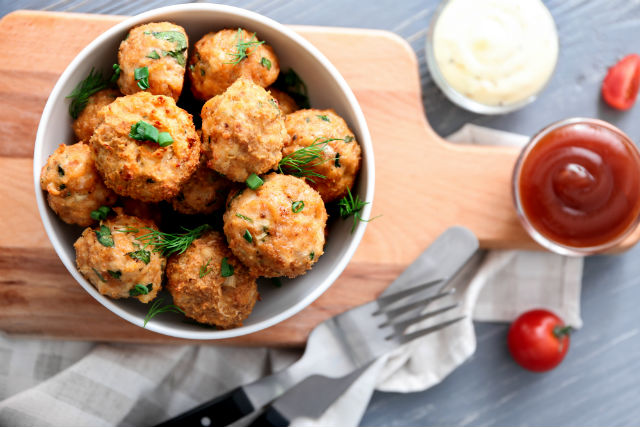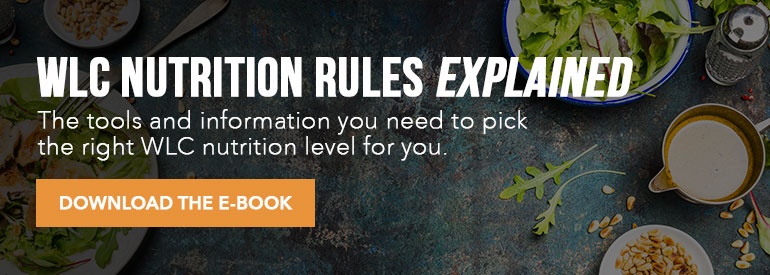 Reading Time: 8 minutes
Reading Time: 8 minutesI work in a cubicle farm. Unique to my quad of cubicle-mates over the past two years is that each of us has run our own version of a long-term nutritional experiment with independently strong results.
One coworker lost fifty pounds from logging a daily limit of calories and running. Another person lost twenty pounds on the ketogenic diet, counting fat grams on an Excel spreadsheet, toting charcuterie snacks everywhere, and exercising in moderate amounts. The third desk buddy opted to primarily eat protein and veggies to sustain previous weight loss and has remained in his most tailored suits.
From my desktop’s view, when it comes to nutrition, there appear to be several means to an end, and many ends to those means.
All this being said, if you’re going to invest time and money into grocery shopping, meal preparation, and a gym membership, a grasp of nutritional fundamentals and their impact on your workouts wouldn’t hurt, right?
So, let’s breakdown the relationship between macronutrients — protein, fats, and carbohydrates — and your exercise and body composition goals to assure your efforts toward success are well spent.
To Sprint Is to Require Carbohydrates
There will be no scientific diagrams to accompany this article. (You can thank me later.) To put it in plain English, carbohydrates come in many forms (from birthday cake to sweet potatoes), and as much smack talk as you may hear about “carbs” by the water-cooler nowadays, carbs play a key role in exercise performance.
To put it simply, carbs break down more quickly than the other two macronutrients and, therefore, carbs are your body’s preferred fuel source. The process of generating energy from carbs is so fast that carbs are your body’s go-to fuel for the first few minutes of any form of exercise.
The bad news: if you’re planning to do plyometrics, run sprints, or take a HIIT class, and you’ve opted for a low-carb diet, you can firmly expect your performance to be diminished during these activities versus times when you had a diet that included more carbs.
The good news is that not all carbs are equal. Carbs have varying chemical makeup:
- The cake-and-candy type carbs are composed of simple sugars (or monosaccharides), that break down most quickly during digestion and send your blood sugar soaring.
- Vegetables, fruits, oats, and legumes are among the complex carbohydrates (polysaccharides) that are slower to digest and more fibrous in their composition. Polysaccharides cause less impact to blood sugar and thereby a less dramatic insulin response.
- Dairy foods (milk, cheese, yogurt) fall somewhere between simple sugars and complex carbohydrates in terms of their chemical makeup and time to breakdown during digestion.
Here comes the point where you’re hoping I’m about to say a candy bar is your best choice before a day of treadmill sprints. Sorry, my friend, that’s not going to happen.

Complex carbohydrates provide the greatest nutritional benefits. Per calorie, complex carbohydrates will provide the most satiety in sheer volume and fiber content. A single, large sweet potato delivers only 162 calories of complex, fibrous, starchy carbs. A solid slice of cake can run up to 500-700 calories. The sweet potato’s fiber content will lead to slower digestion, whereas the cake may send your blood sugar soaring and have you back for that second slice within an hour.
Carbohydrates also serve a purpose in the fat-burning process, so an absence of carbs can degrade performance in endurance activities that require delving into fat stores. For the purpose of this article, let’s consider “endurance activities” any exercise over 45 minutes.
The bottom line: complex carbohydrates remain an important fuel for exercise performance, particularly in short, explosive activities or long-duration events. Your best complex carbohydrate sources include steel-cut oatmeal, potatoes, brown rice, quinoa, beans, pumpkin, grapefruit, apples, and cantaloupe.

Super High Fat and Your Workouts
Oh, fat — quite the divisive party topic of late. Head to your nearest guacamole bowl and see. Public opinion toward fat consumption has taken a dramatic shift from the low-fat trends of the 1990s with the recent popularity of high-fat diets.
Fats can be categorized in a few ways:
- Manufactured trans fats, also known as “fried deliciousness” or the foods you can find in the middle of a grocery store. Trans fats can survive a nuclear holocaust in terms of shelf-life thanks to their processed chemical structure.
- Saturated fats, which are found in fatty meats and dairy.
- Unsaturated fats, the “winners” in terms of the fat with the most health benefits: olive oil, nuts, seeds, avocados, and some fish.
Fat calories are more than double in calorie-per-food gram over carbohydrates and protein. For each gram of a fat consumed, the body will have 9 calories of energy available to burn. For each gram of a carb or protein consumed, the body will have 4 calories available for fuel.
In other words, if you ate 100 grams of fat (7 tablespoons of butter), you’d get double the amount of available energy (900 calories) than if you ate 100 grams of carbs or proteins (400 calories or about 4 slices of bread or 3.5oz of chicken). The butter would make you the fullest while simultaneously sending your calories for the day soaring.

I have personally experimented with high-fat eating quite a bit. I experienced a curb in appetite, as fat has the slowest release time from the stomach. And I enjoyed the subsequent weight loss from being less hungry. I also felt the increased energy levels as my body increased its ability to metabolize fat.
But I also bonked on many a morning metabolic conditioning exercise session due to the lack of carbohydrates in my diet.
That said, if your exercise activity is low- to moderate- intensity in nature, a high-healthy fat diet could pay off. If you plan to increase fat in your diet while decreasing carbs, a good rule is to time your challenging exercise sessions to within a couple hours of a meal in which you consume your limited carbohydrates.
One more note on fat and exercise: some sports dietitians recommend performing early morning cardio in a fasted state to train your body’s ability to select fat stores for energy. This makes sense, but do not expect to have your “absolute best ever” workout or feel at your highest level of energy while engaging in this type of fasted cardio.
Protein Intake and Your Peak Results
Admittedly, my desire to revisit the world of macronutrients in this article came from a recent revision of my own macronutrient plan. In the informal nutritional cube-farm study results mentioned earlier, I left out my personal findings. Drumroll, please…
A historical snapshot of me: you’ll find me switching up my nutrition on a monthly basis, up early to exercise daily at 5:00am, and ever-evaluating the impact of my nutrition on my performance and body composition. I have weighed within the same ten-pound range for seventeen years, a feat in itself, but have run the gamut of marathoner, yogi, strength-training fanatic, and all the body types that go with these activities.

After a prolonged period of Bulletproof coffee and avocado indulgence, in 2018, I went back to what my personal training textbooks of yore emphasized repeatedly:
As an athlete (even an amateur athlete), you must consume a minimum of 0.5g to 1.0g of protein per pound of body weight to provide your body with the proper fuel to recover from prolonged exercise. Interestingly, if you’re an active person looking to shed a few pounds, the recommendation is 1.0g per pound of body weight. In other words, as an active woman, if I wanted to be a lean, mean, fighting 150-pound machine, I needed a minimum of 150g of protein a day.
While that may not sound too bad up front, upon adopting this strategy I was quickly reminded of how darn difficult it is to consume 136g of protein (544 calories of protein) in one day.
To hit that number and spread my protein consumption throughout the day as recommended, I had to consume the following (plus my fruits, veggies, and other components of a healthy nutrition plan):
- 8oz of egg whites for breakfast
- 2 chicken breasts for lunch
- A protein shake and a handful of nuts for a snack
- Another form of protein like lean beef or fish for dinner.
But, with this change from a higher-fat diet to a higher-protein diet, my exercise performance and muscle definition increased — and my body fat started flying off.

I share this to say, if you are very active (an hour or more of activity a day), focusing on carbs or fats at a detriment to your protein intake could be holding you back from your long-term fitness goals. This is because protein has a lot of jobs in the body: maintaining lean muscle mass, bolstering the immune system, muscle repair, and optimizing bone density.
Some simple principles when it comes to activity and protein:
- There is zero differentiation between protein requirements for endurance athletes and resistance training athletes.
- Some nutritional resources will recommend up to 2.0g of protein per pound of body weight. There is debate about whether anything beyond 1.0g of protein per pound of body weight is usable by the body.
- “Book-ending” protein intake, by ingesting 20g of protein and 35g of carbs, 30-60 mins before and after workouts, is what research shows provides maximum benefits for fueling muscles during workouts and the release of growth hormones after exercise.
If you’re thinking you don’t need to worry about protein because you just want to lose weight, remember that sustaining lean muscle mass is key to maintaining your weight loss.
Does all this now have you wondering about supplementation? As the Whole Life Challenge has taught you, whole unprocessed foods will always be your number-one food choices. But if you’re finding it very hard to hit your protein intake, organic protein powder (free of additives and sweeteners) can provide an assist.
Great whole food sources of protein include: eggs, chicken, turkey breast, tempeh, grass-fed beef, Greek yogurt, and fish.
Fats, Carbs, Protein, and Your Goals (Oh My!)
If there is one universal principle in all this macronutrient talk, it’s to track both what you’re consuming and how you are feeling when you exercise. If you change up your macronutrients and you start running faster and/or lifting heavier, that’s a good sign. If you’re sleeping enough and drinking plenty of water, but you’re suddenly hitting a wall during your workouts, it may be time to reevaluate your macronutrient distribution.




